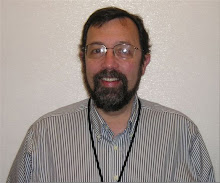Wednesday, June 30, 2010
So What?
• Understanding the variety of environmental, leadership and structural requirements of groups to flourish at each level of development could be a critical tool for OD consultants.
• Leadership is not static. If, in fact, humans rely on leaders to self organize, then being able to map the leadership needs at each level of organizational complexity would guide selection and development of leaders.
• An important aspect of an epigenetic model is the ability (or lack) of a group to master a developmental “crisis”. As groups move naturally from one developmental stage to another, recognition of these helps make sense of what this group needs to work on, and if they have the resources needed to progress.
Monday, June 28, 2010
Putting the "genetic" in epigenetic
Humans are social animals, and as such, have a biological predisposition to form groups. Mammals, including primates, almost always develop a hierarchy within groups (even if called a herd, pack, pride or pod), with an individual becoming “dominant”. Is this a “template” for human social groups?
In Peter Farb's book Humankind (1978), he identifies four major behavioral characteristics that distinguish primates: social learning, tool making, cooperation in hunting, and social organization. Farb states that these have important implications in the later development of a human way of life. He states that primates exploit group living in a way that confers numerous adaptive advantages. This includes the security of companions known since infancy, kinship ties with the mother and with siblings who can counted on for protection, the safety afforded by the continued presence of adult males, and pleasurable social interactions of a predictable way of life. (Aronson, Wilson, & Akert, 1999)
Underlying all social organization are the facts that group life in primates is essential for protection and that the entire complex of social learning is a hallmark of social organization (Farb, 1978). Learning, tool making, and cooperative hunting are rooted in our primate heritage… Two aspects of (primate) social organization, though, are exceptional. The first is that among the primates all social processes may occur at anytime, in most mammals specific seasons of the year are set-aside for such events as battles between males, mating, birth, and migration. Because these and other events may take place at the same time a primate group, individuals must learn to switch rapidly from one social context to another.
The second way monkeys and apes differ from most other mammals is in being attached permanently to social group. A solitary bear, elk, or beaver can survive very well in its own, but the solitary anthropoid is usually a dead anthropoid. Group life is essential for protection and for maintaining the entire complex of social learning that is a hallmark of the primate way of life. These two features of primate social life have reached their fullest expression in humankind. (Farb, 1978)
Some of the social behavior that distinguishes the human species can be found at least in prototype among the other primates. Many people condemn dominance behavior because it is based on the threat of force; but among primates it is an adaptation to promote social harmony. These hierarchies grow out of social experiences that begin shortly after birth, to teach the young monkey or ape who can be dominated and who cannot. Eventually all members of the group learn their places in the hierarchy. (Farb, 1978)
Farb makes the socio-biological link between primate and human social behavior and points out the evolutionary benefit to creating and maintaining a hierarchy in groups:
Forming relationships with other people fulfills a number of basic human needs. So basic, in fact, there may be an innate need to belong to social groups. (I)n our evolutionary past, there was a substantial survival advantage to establishing bonds with other people. People who bonded together were better able to hunt for and grow food, find mates, and care for children. Consequently, the need to belong has become innate it is present in all societies. Consistent with this view, people in all cultures are motivated to form relationships with other people and to resist the dissolution of these relationships. (Farb, 1978)
Aronson, E., Wilson, T. D., & Akert, R. M. (1999). Social Psychology (3rd ed.). Prentice Hall: Englewood Cliffs, NJ.
Farb, P. (1978). Humankind. Houghton Mifflin Company: Boston.
